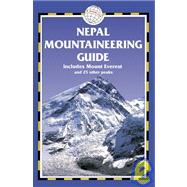
| Pre-departure planning Climbing in Nepal | |
| Selecting a mountain and climbing style, First steps, When to go, Budgeting, Cost of an expedition | |
| Tipping | |
| Trekking money, Organization and booking, Choosing a commercial guided climb | |
| Semi-commercial organization, Doing it privately, The peaks, Climbing companions, Fitness and training, Clothing and equipment, Visas, Communications, Insurance | |
| Nepal Facts about the country, History of climbing in Nepal, Practical information for the visitor | |
| Immigration | |
| Getting to Nepal | |
| Local transport | |
| Language | |
| Electricity | |
| Time | |
| Money | |
| Post and telecommunications | |
| TV, newspapers and magazines | |
| Holidays and festival | |
| Food | |
| Drink | |
| Things to buy | |
| Security | |
| Kathmandu Expedition planning in Nepal | |
| Minimum Impact and Safe Climbing (including Risk Assessment) | |
| The Peaks Tharpu Chuli, Hiun Chuli, Singu Chuli, Mardi Himal, Chulu West, Chulu Far East , Annapurna IV, Pisang, Paldor, Naya Kanga, Ramdung, Everest, Pumori, Lobuche East, Imja Tse, Kongma Tse, Pokalde, Ama Damblam, Parchamo , Kusum Kanguru, Kwangde Ri, Mera, Baruntse Appendices Health, Nepali words and phrases, | |
| Glossary | |
| Bibliography | |
| Index | |
| Table of Contents provided by Publisher. All Rights Reserved. |
The New copy of this book will include any supplemental materials advertised. Please check the title of the book to determine if it should include any access cards, study guides, lab manuals, CDs, etc.
The Used, Rental and eBook copies of this book are not guaranteed to include any supplemental materials. Typically, only the book itself is included. This is true even if the title states it includes any access cards, study guides, lab manuals, CDs, etc.
Excerpted from Nepal Mountaineering Guide by David Baggaley
All rights reserved by the original copyright owners. Excerpts are provided for display purposes only and may not be reproduced, reprinted or distributed without the written permission of the publisher.